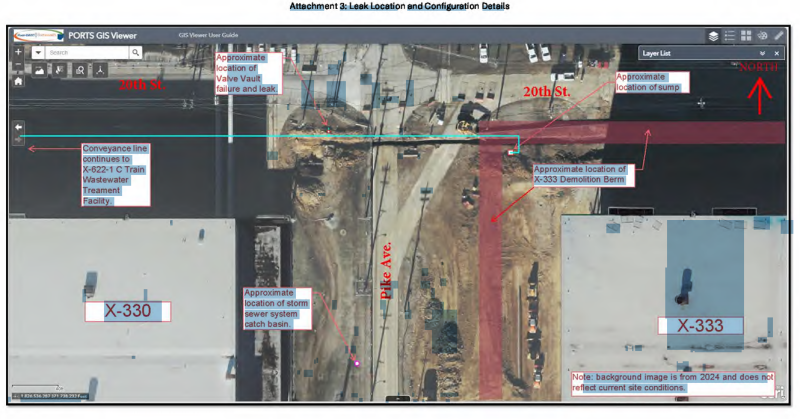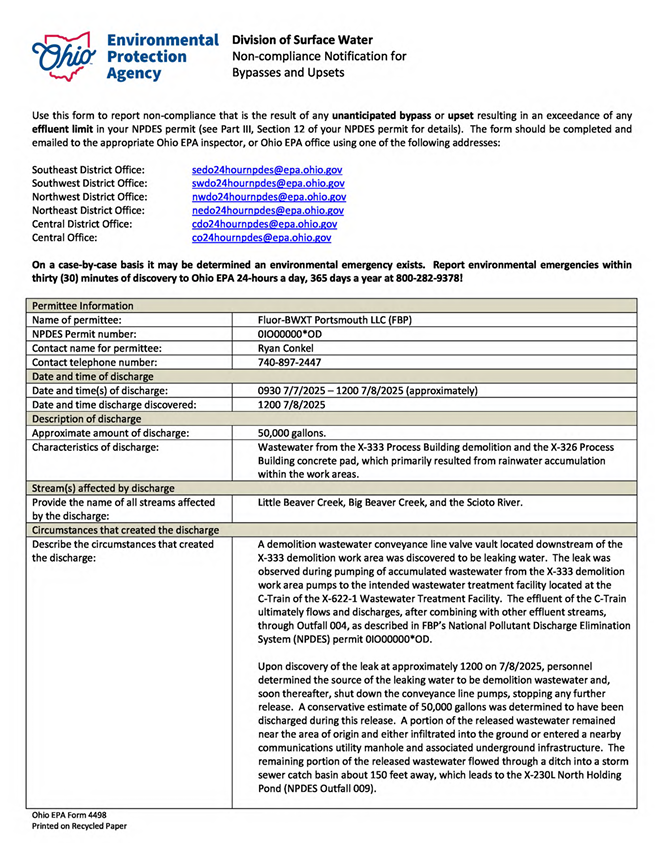
PIKETON, Ohio — An estimated 50,000 gallons of potentially radioactive wastewater were released on-site during a demolition project at the Portsmouth Gaseous Diffusion Plant, a former uranium enrichment facility with a long history of toxic contamination.
The release, detailed in a report filed with the Ohio Environmental Protection Agency, occurred over approximately 26 hours between July 7 and July 8, 2025. The contractor, Fluor-BWXT Portsmouth (FBP), stated the leak originated from a failed pipeline valve in a system designed to transfer accumulated rainwater from the demolition sites of the former X-326 and X-333 process buildings.
The facility, which once enriched uranium for the U.S. nuclear weapons program, has been undergoing a massive, multi-decade decontamination and decommissioning process. The water was released when a valve failed, allowing pressurized water to rupture a conveyance line vault. Some of the wastewater seeped into the ground, while the rest flowed into a storm sewer that ultimately discharges into local waterways, including the Scioto River.
This incident is particularly concerning given the site's troubled environmental record. The released water came from the demolition area of the X-326 process building, a facility where previous government testing has confirmed the presence of transuranics—highly radioactive elements such as plutonium and neptunium that are byproducts of nuclear reactors and are hazardous to human health.
In its report, FBP stated that water samples were collected and analyzed for contaminants. While the contractor reported that radionuclide levels were within normal ranges and below federal standards, it did note a small, "estimated" detection of PCBs two days after the leak was contained. FBP's report called the finding anomalous and stated there was not "compelling evidence" linking the PCB detection to the wastewater release.
Crews stopped the leak by shutting down pumps and later removed the faulty valve, permanently capping the pipe.
The incident underscores the ongoing environmental challenges at the sprawling Pike County complex, which for decades has been the subject of community health concerns and whistleblower lawsuits alleging the mishandling and release of hazardous and radioactive materials.

